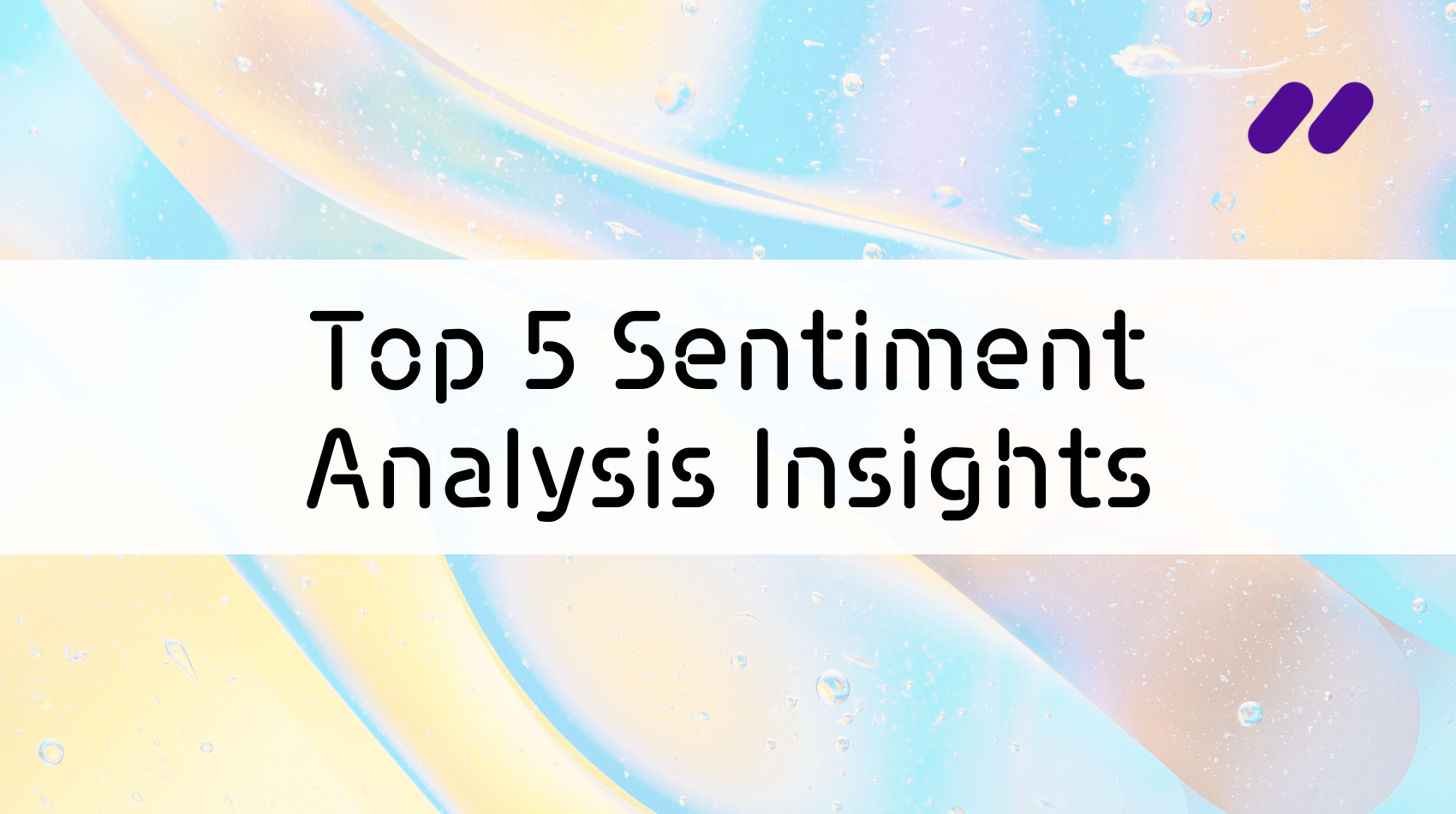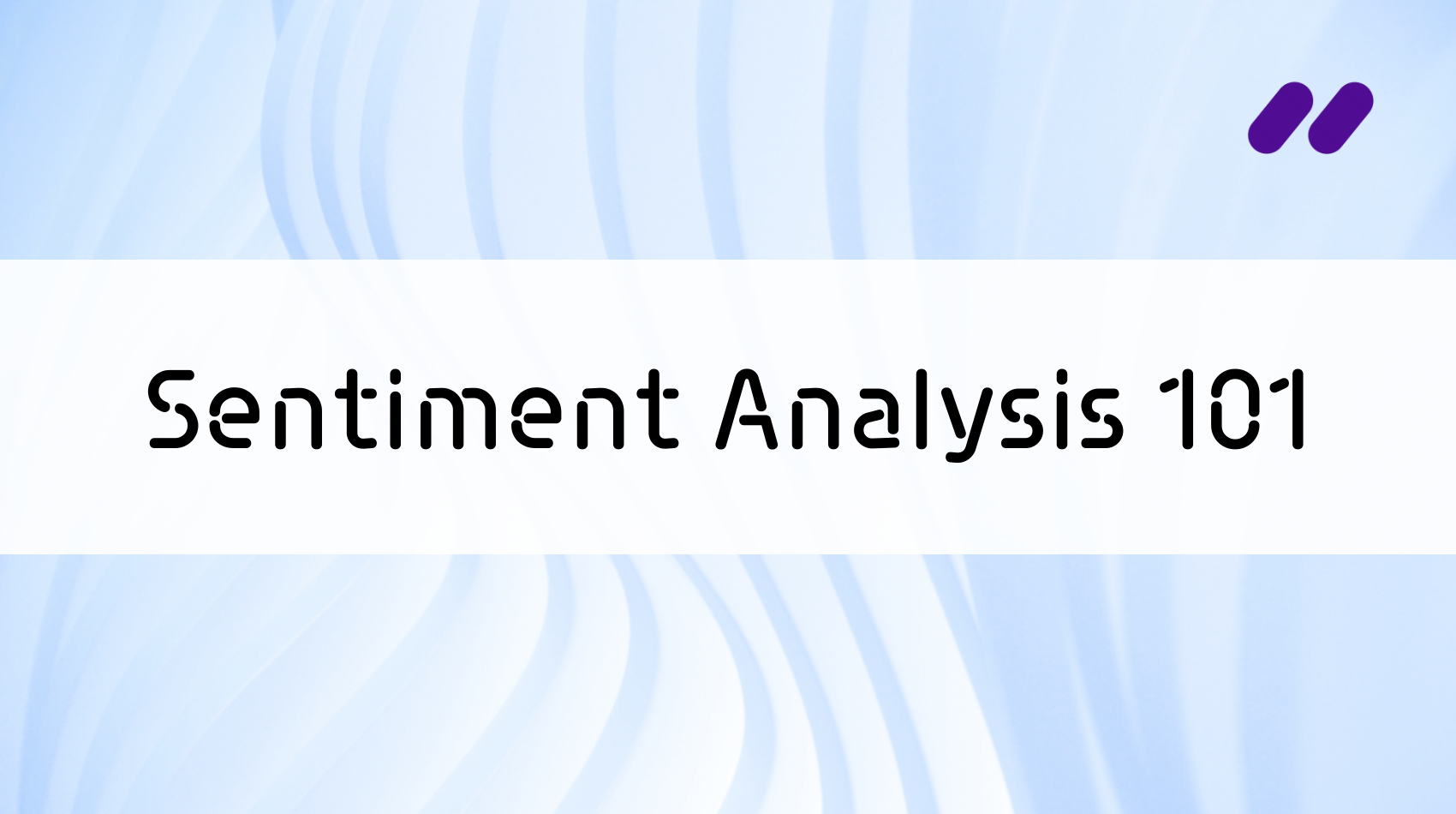Over the past few years, and particularly accelerated by the pandemic, emotion has emerged as the core driver of purchase decisions, often surpassing the product or service offering itself.
Today, understanding where customers are coming from and how they relate to your brand matters greatly when it comes to shaping your customer experience.
And the number’s don’t lie, either. Here’s what we know:
- 88% of consumers view a brand’s products as higher quality if they feel the brand is listening to them.
- More than 80% of buyers on Amazon trust product reviews just as much as word-of-mouth recommendations.
- 64% of people view customer experience as more important than price when making a purchase.
Providing a positive customer experience is essential to staying competitive. To offer this kind of experience, it’s important to understand not only what your customers want, but how they think and feel. This is where customer sentiment analysis comes into play.
Related: How customer sentiment analysis can improve your user experience.
1. What Is Sentiment Analysis?
Traditional sentiment analysis is about understanding the emotions of a customer or employee. Often, this concerns a specific product or service, but broader brand sentiment analysis is also common. Sentiment analysis can be applied to several different sources of feedback to determine what customers are talking about, how they talk about it, and their overall opinion.
Typically, surveys, reviews, and social posts are the most common data sources for sentiment analytics. Also included are customer inquiries, employee interactions, and customer service experiences. The more data points you include, the more accurate a picture you can construct of overall customer sentiment. Of course, this is easier said than done.
It’s no secret that language can have a lot of ambiguity, and so sentiment data cannot be simply extracted from keywords without the proper context. For instance, a phrase like “my skin feels moisturized” could be interpreted as positive or negative based on whether or not the product is meant to have such a result.
Sentiment analysis at its core is about understanding the context behind customer opinions, especially when it comes to quantitative metrics like CSAT or NPS. While numbers can provide a benchmark for overall satisfaction, by themselves they are not enough. It’s with text analytics platforms that companies are able to examine the real customer emotions behind the numbers, and take informed actions.
2. What Is a Sentiment Score?
To determine overall sentiment about a product, service, or brand as a whole, the most common quantitative metric is the customer sentiment score. How it works is simple: customer comments are graded using positive and negative scores to represent the quality of the experience. The items are then collated and averaged out to determine an overall score. These kind of metrics include:
- Net Promoter Score: How likely a customer is to recommend your brand to a friend or colleague, on a scale of 0-10. Some companies convert reviews into NPS.
- Customer Satisfaction Score (CSAT): Measured from customer feedback, typically a survey question that requests customers to rate their experience from 1-5.
- Star ratings: Particularly for sites such as Google or Amazon, averaging out the star ratings on customer reviews provides an overall measure of satisfaction.
While a satisfaction score like NPS offers an easy way to provide some quantitative information, it falls short when it comes to understanding the reasons behind the score. For instance, imagine a hotel breakfast that earns a CSAT rating of 2 out of 5. Without the customer stories that provide the context (the food was cold, the fruit expired, etc.), companies are limited in their ability to take action. This is where we see clearly the business value of sentiment analysis that dives into the unstructured feedback left by customers.
3. What Are the Roadblocks to Effective Sentiment Analysis?
Sentiment analysis isn’t easy for a lot of companies, and there are some common pitfalls to take into consideration when implementing sentiment analysis at your organization.
- Lack of investment: Most companies understand the importance of metrics such as NPS but many of them don’t invest in a text analytics solution to identify the context behind the score.
- Single channel data collection: Businesses are often hyperfocused on framing the customer experience through surveys. Insights are found not only in survey questions that prompt customers to talk about predefined items, but also and perhaps more importantly in unsolicited feedback such as reviews, support tickets, and customers’ chat conversations.
- Lack of automation: Sentiment analysis is aided greatly by text analytics software that automatically collects and analyzes customer comments from multiple channels. The manual work required to do sentiment analysis is a massive organizational challenge that is mitigated by these kinds of solutions.
- Incomplete digital transformation: An omnichannel approach to sales and marketing goes hand in hand with both more accurate sentiment analysis and a better customer experience.
- Failing to see the bigger picture: It bears mentioning again that no data exists in a vacuum. Quantitative data needs qualitative data to identify the root cause of customer problems.
4. What Are the Best Practices for Sentiment Analysis?
With the right knowledge and preparation, sentiment analysis can be a game changer for your organization when it comes to customer insights.
- Omnichannel customer feedback: Survey data and ratings are still important, but the best way to get comprehensive understanding of the customer journey is to collect and analyze unstructured feedback across the customer journey.
- Secure buy-in: Demonstrate how customer pain points impact other departments beyond customer experience and marketing. Customer stories mean a lot more to executives than a simple NPS or CSAT metric.
- Build empathy: Remember that customer sentiment analysis isn’t about you or your brand. It’s about your audience. Your goal is to understand them and provide them with the best service possible.
- Choose a robust platform: A text analytics platform automates feedback analysis from multiple channels and supports your team in identifying the causes of customer problems. Your sentiment analysis is only as good as the data you collect, and your insights only as valuable as the platform that provides them.
5. How Do You Turn Sentiment Analysis into a Competitive Advantage?
Customer experience is far more than a competitive differentiator – it’s the starting point for owning the voice of the customer.
And without a big-picture understanding of your brand’s reputation and customers — without listening to your audience — it is a buy-in that you cannot afford.
Discover how leading companies are leveraging Keatext to transform the way they manage the voice of the customer.





